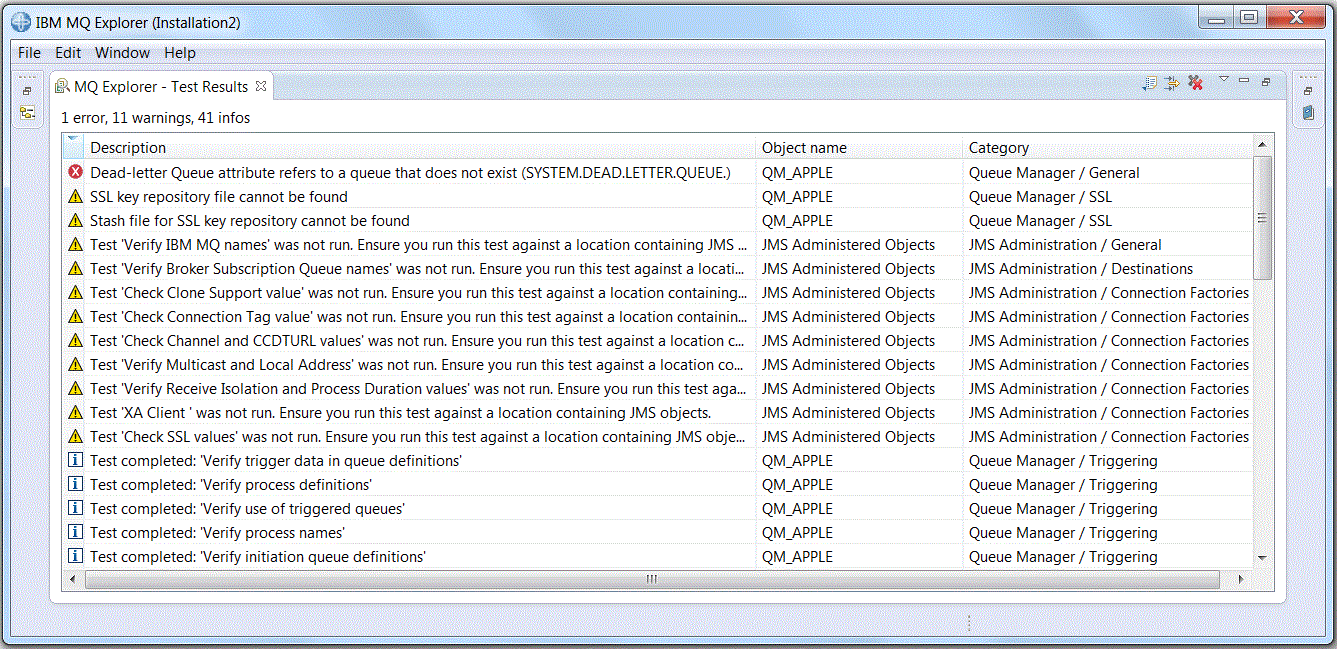Testing your object definitions for problems
We can use the IBM MQ Explorer tests to check your object definitions for errors and potential problems.
About this task
When you define objects in IBM MQ Explorer, certain properties of the objects are mandatory and we cannot create the objects without defining those properties. However, there are several properties that are not mandatory but which you should define so that your IBM MQ configuration works, so that the configuration is easier to maintain, or for audit purposes.
The IBM MQ Explorer tests check your object definitions for errors and potential problems. Each area of IBM MQ that can be checked is defined as a discrete test; for example, there is a test to check that we have defined matching channel pairs, a test to check that we do not have more than one TCP listener trying to listen on the same port, and a test to check that multiple queue managers on the same system are not using the same or similar names. The problems found by the core tests do not always indicate a serious error and sometimes just indicate where there is potential for confusion and mistakes when administering the objects; for example, two queue managers on the same system with similar names could cause problems.
A set of tests is supplied to check the main IBM MQ object definitions (for example, queues and channels); for the complete list of IBM MQ tests, see IBM MQ tests. There are also other tests available that are supplied with other parts of IBM MQ Explorer, such as JMS administered objects.
Test results are displayed in the Test Results view, as shown in the following figure, which opens the first time that you run the tests.

We can extend the supplied set of tests to include your own custom tests so that IBM MQ Explorer can provide feedback that is directly relevant to how we use IBM MQ. For instructions and sample custom tests, see Add new tests.